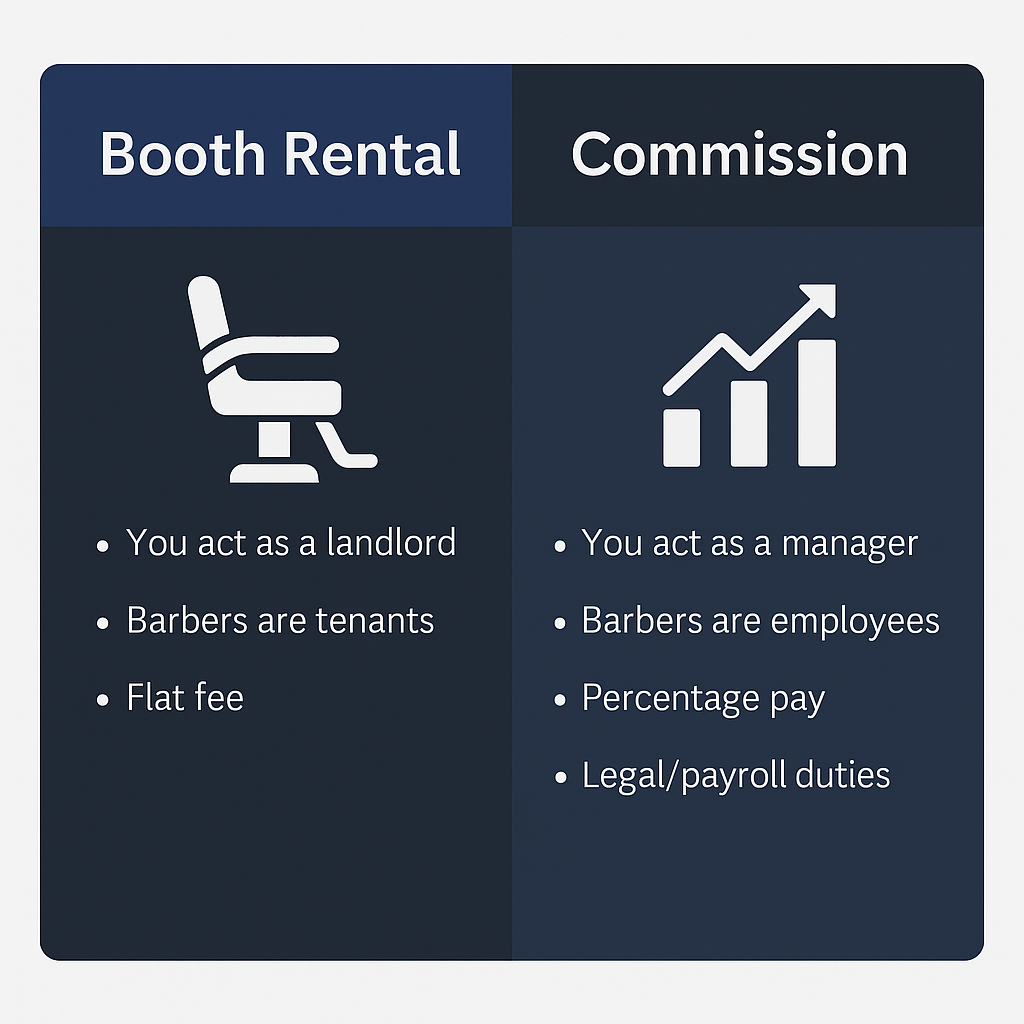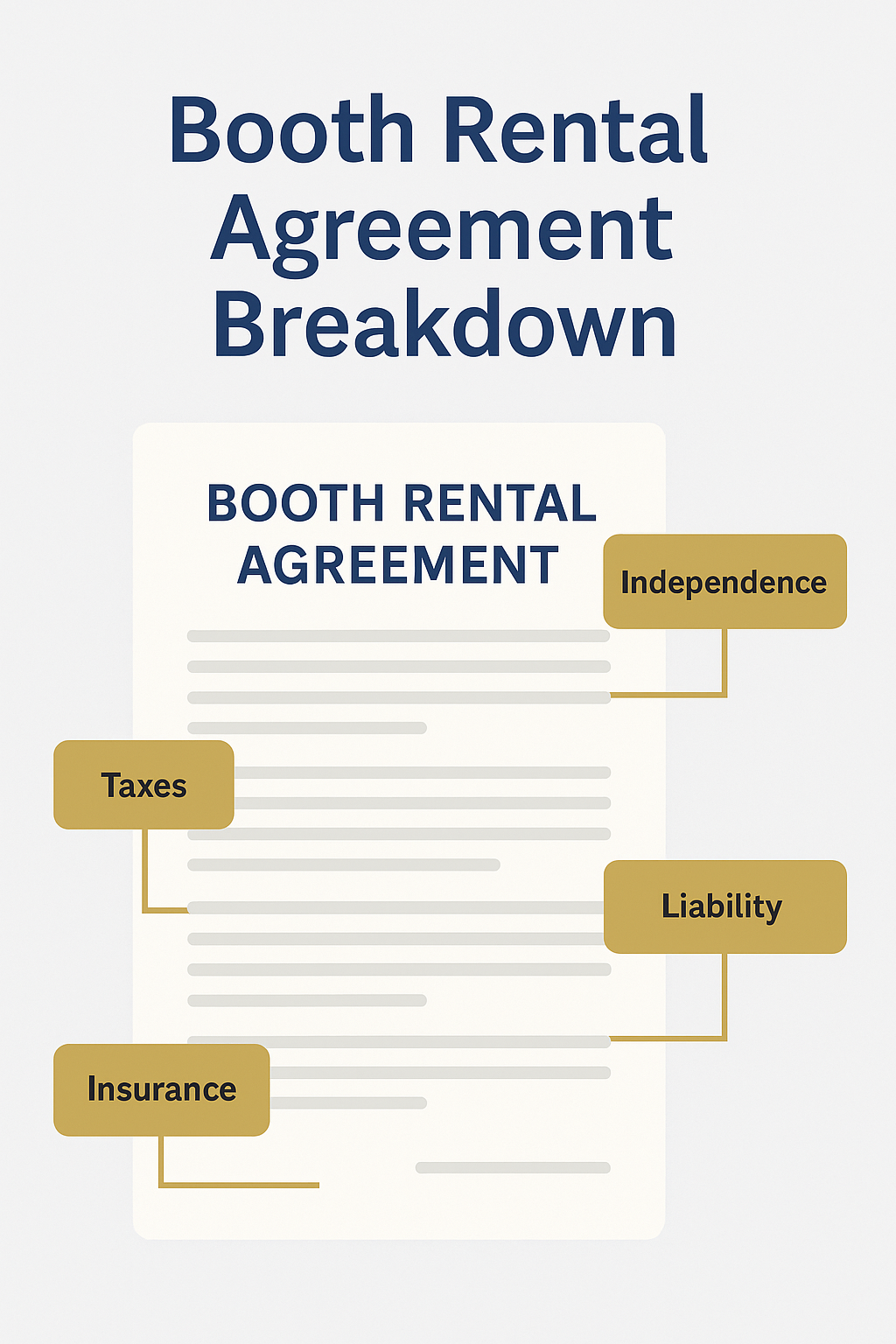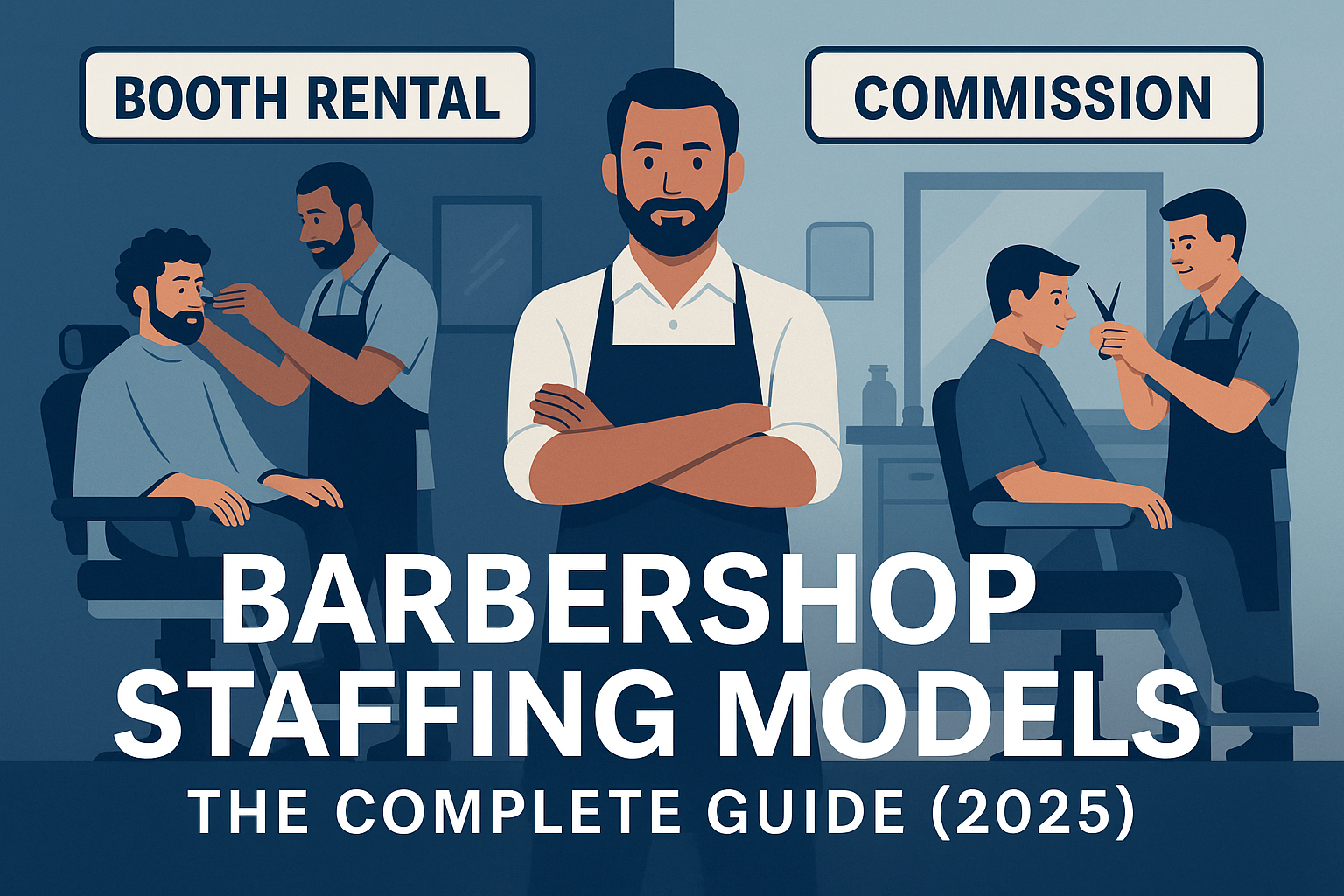After securing your location, the single most important decision you will make as a new barbershop owner is how you will build your team. This choice goes far beyond just hiring; it defines your business model, your legal responsibilities, your shop’s culture, and your ultimate potential for profit.
Choosing the wrong staffing model is one of the most common and costly mistakes a founder can make. It can lead to legal trouble with the IRS, a toxic shop environment, high turnover, and a business that is “busy but broke.”
This guide will serve as your definitive resource for understanding the two primary barbershop staffing models. We will break down the pros and cons of each, explain the critical legal differences, and walk you through the process of hiring and paying your team correctly.
This is a comprehensive overview. For a deeper dive into any specific stage, be sure to read our detailed cluster guides linked throughout.
Table of Contents
Part 1: The Foundational Choice: Booth Rental vs. Commission
At the heart of barbershop staffing is one fundamental question: Are the barbers who work in your shop independent business owners who rent space from you, or are they your employees? The answer determines everything.
- The Booth Rental Model: You act as a landlord. Barbers are your tenants (independent contractors) who pay you a flat fee to use your chair. They are their own boss.
- The Commission Model: You act as a manager. Barbers are your employees (W-2 workers) whom you pay a percentage of the revenue they generate. You are their boss.

Understanding the profound financial, legal, and cultural implications of this choice is the first and most critical step in building a successful team.
Go Deeper: For a complete financial breakdown and a quiz to help you decide, read our detailed guide: Booth Rental vs. Commission: Which Barbershop Staffing Model is Right for You?
Part 2: The Legal Shield: Your Booth Rental Agreement
If you choose the booth rental model, your most important legal document is your Booth Rental Agreement. This contract is your primary defense against “worker misclassification,” a serious issue where authorities could claim your renters are actually employees, leaving you liable for back taxes and penalties.
A well-drafted agreement clearly defines the barber as an independent contractor, outlining their responsibilities for their own taxes, insurance, and licenses. It protects your business and sets clear, professional boundaries from day one.

Go Deeper: To create a protective contract and understand every clause, see our guide: The Owner’s Guide to Barber Contracts and Payroll
Part 3: The Hiring Process
Whether you’re hiring your first W-2 employee or recruiting your first booth renter, you need a structured process. Finding skilled, professional, and reliable barbers is one of the biggest challenges in the industry.
A successful hiring process involves more than just judging a barber’s technical skills. It requires writing a compelling job description, knowing where to post it, conducting effective interviews that assess both skill and cultural fit, and properly vetting candidates before making an offer.
Go Deeper: For a step-by-step checklist for finding and securing top talent, read our guide: How to Recruit and Hire Barbers Who Will Build Your Brand
Part 4: Payroll & Compensation
Once you’ve hired an employee on a commission or salary basis, you become responsible for managing payroll. This is another area where new founders often make costly mistakes.
You need to understand how to correctly calculate wages, withhold the proper taxes, and navigate the complexities of payroll software. Setting up an efficient and legally compliant payroll system is essential for maintaining a happy team and avoiding trouble with the IRS.
Go Deeper: For a complete overview of setting up your payroll system, read our guide: Beyond the Cut: How to Train and Retain a Five-Star Barber Team

